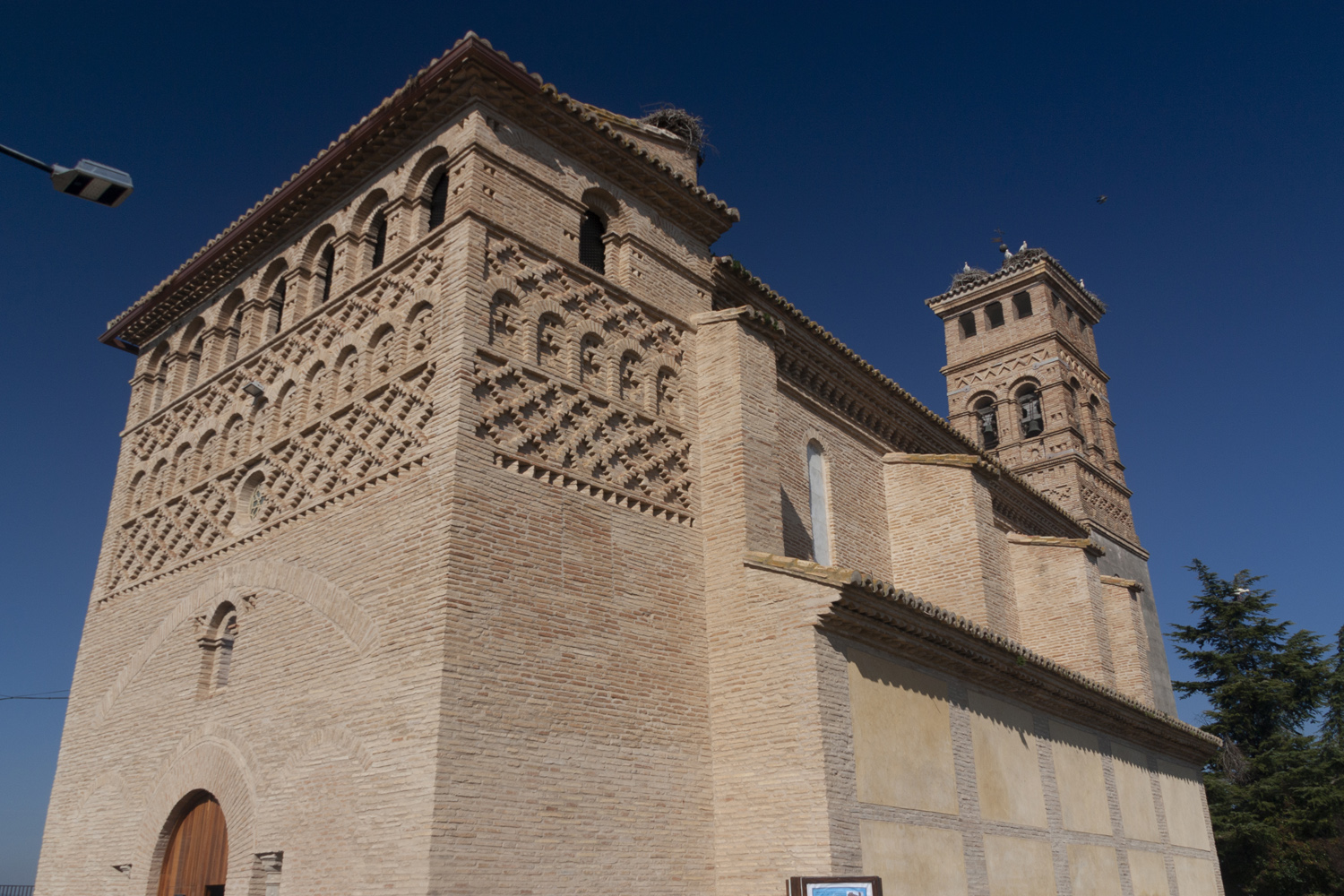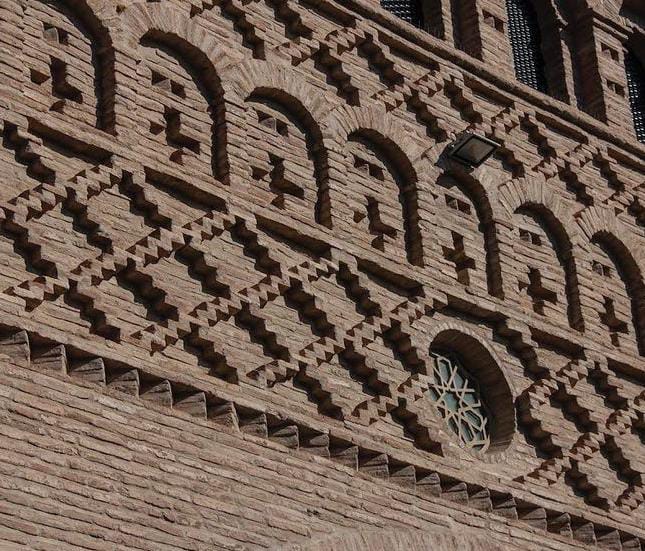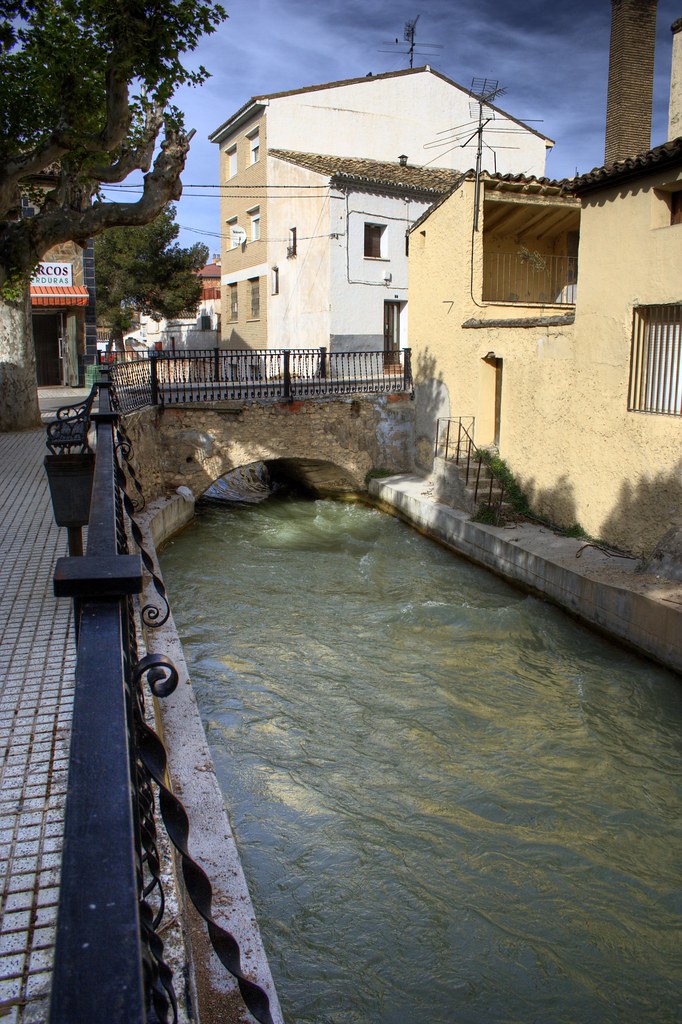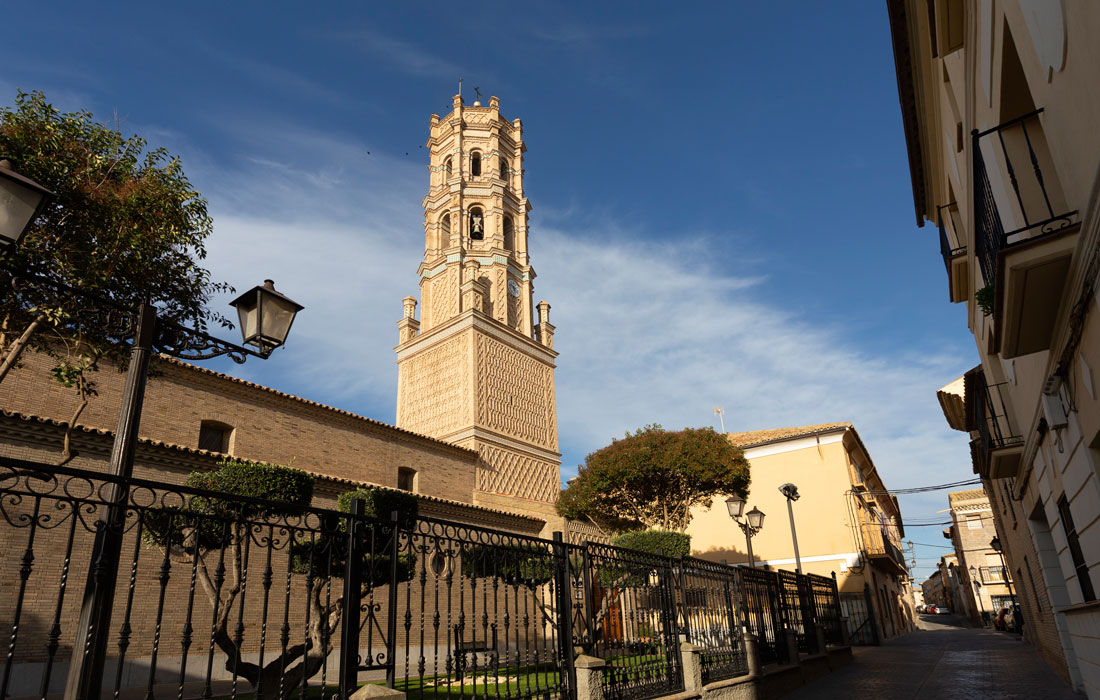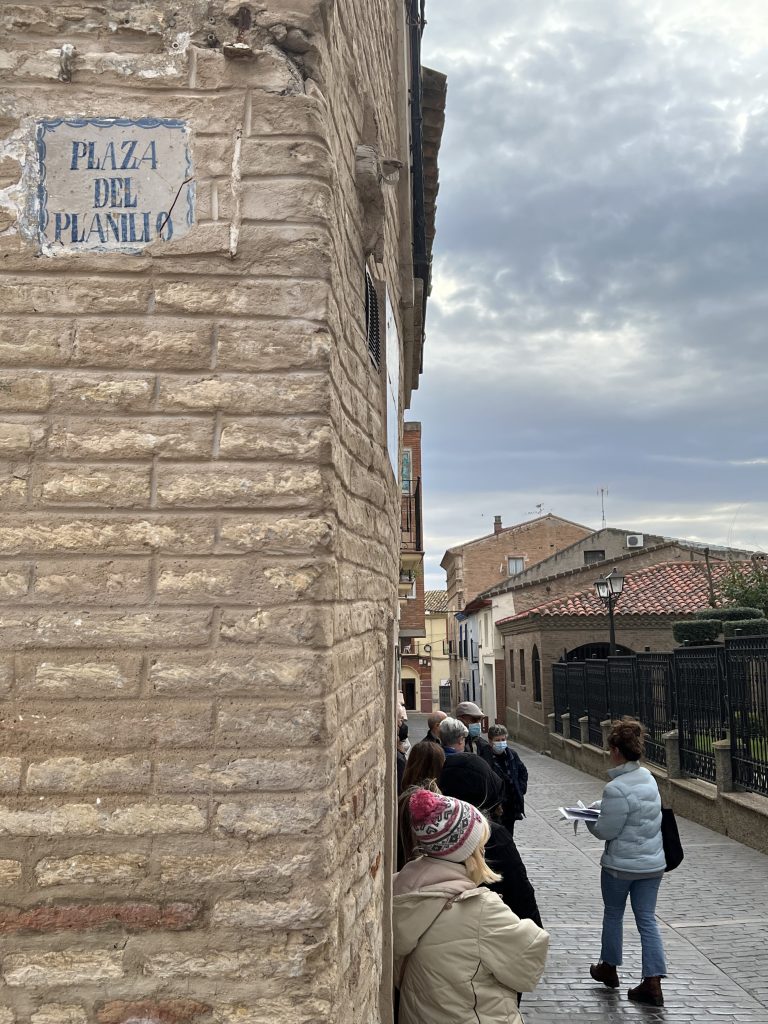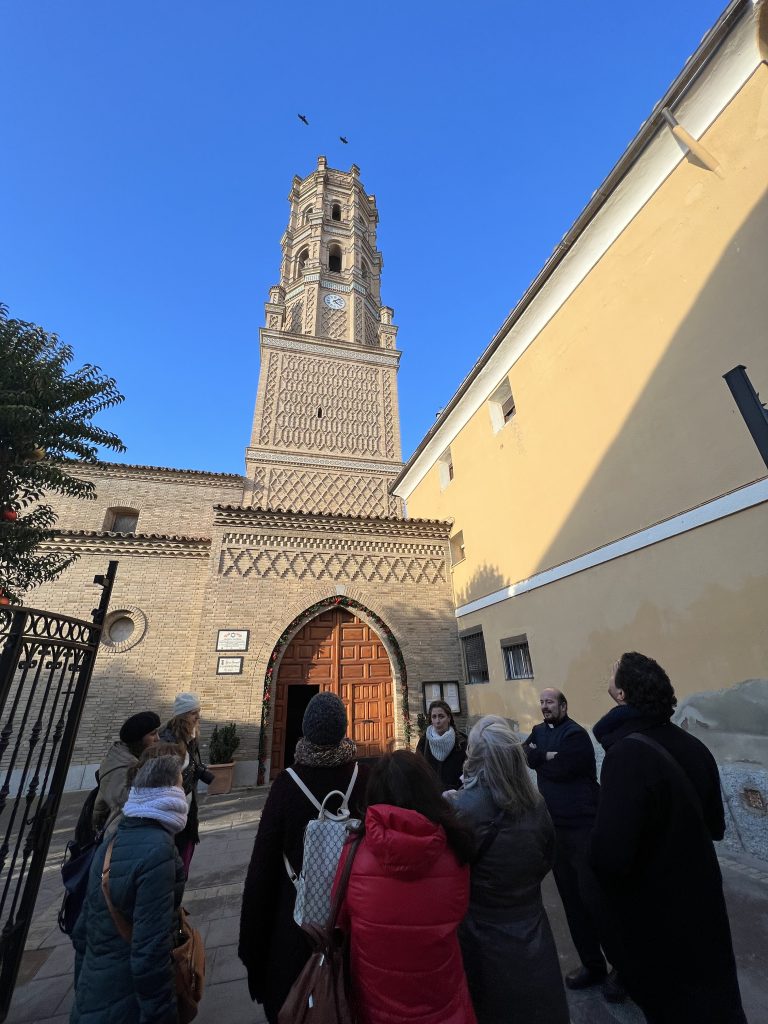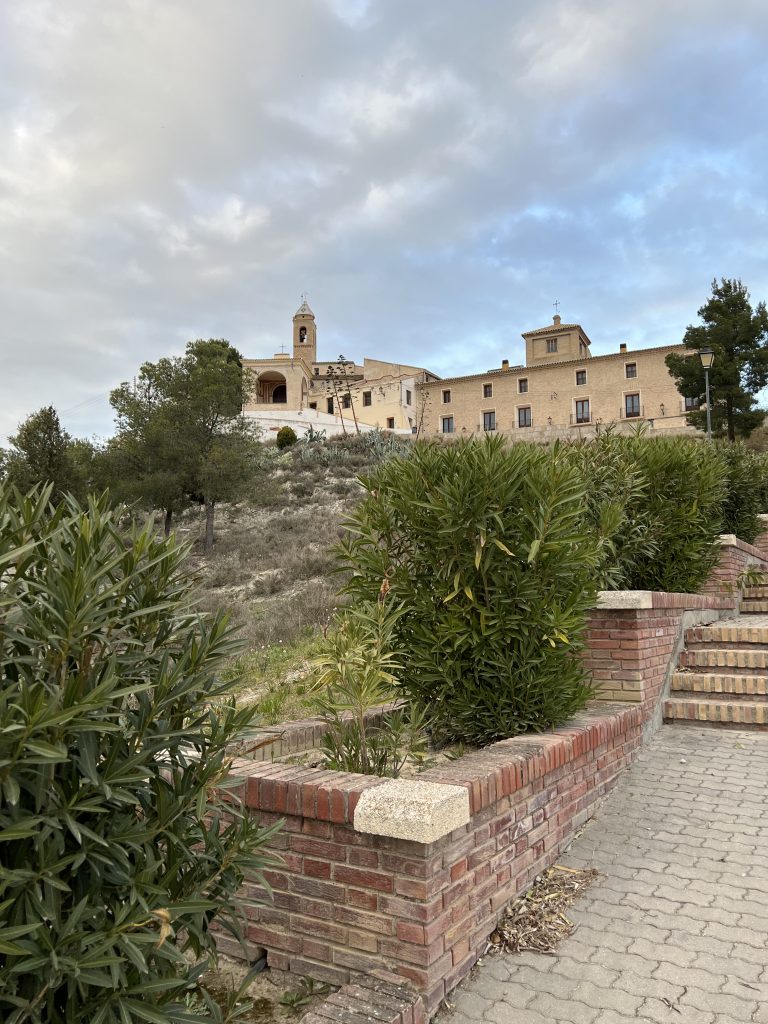Circular from the rural school
The “Circular from the rural school” project is a cooperation project between rural development groups led by the Asociación Territorio Mudéjar.
The following have participated in the project: ADRI Calatayud-Aranda, ADRI Jiloca-Gallocanta, FEDIVALCA -Valdejalón and Campo de Cariñena-, ASOMO Tarazona and el Moncayo, CEDEMAR -Bajo Aragón Caspe and Ribera Baja del Ebro-, ADRAE -Ribera Alta del Ebro- and ADEFO Cinco Villas.
The objective is to develop educational materials around the Mudejar identity of the towns, placing rural schools and the educational community of the towns as the center of the project.
Based on the work developed, for almost three years, the students of fifteen schools have designed a walk through their town in which we can learn about the main points of interest and their connection with the Mudejar culture.

Daroca
The route has been carried out following the working model of the schools that participated in the project and adapted to the locality of Daroca.
A stroll through the town of Daroca allows us to discover a town planning and appearance similar to that of a medieval town. Watched over by the remains of its ancient castle, the town is very much in keeping with its Mudejar heritage. Some of its architecture is one of the best examples of the transition between Romanesque and Mudejar styles. We will also discover treasures of its civil architecture such as the unknown Palacio de los Luna. Stopping points and educational activities.

1. History of the town
Daroca was founded in the 8th century by the Muslims. Previously there is evidence of settlements of Celtiberian origin in the ravines near the Calle Mayor. The town was of special importance and formed part of the so-called Marca Superior of the Emirate of Córdoba, together with Calatayud and Zaragoza. The castle is more of a fortified enclosure, comprising two castles situated on hills and linked by almost four kilometres of walls and towers. The settlement of the Arabs in the territory for almost five centuries left its mark and an influence on the way of life that we still inherit today.
This point is linked to the didactic activity 1.

2. Water and agriculture
Water is the most important principle of the universe according to the Koran. It is a divine symbol, since water is necessary for life. It is also present in the Muslims’ idea of their Paradise. For the Mudejars, who were also Muslims, water was fundamental. The river Jiloca flows through Daroca, around which a large Mudejar population was concentrated in medieval times, and therefore many monuments. The Muslims brought with them fruit and vegetables. However, this is a rather dry place, so the Arabs pioneered the introduction of irrigation techniques in the rural world. Some examples are waterwheels, waterwheels, cisterns and the most common, irrigation ditches. In Daroca we have an example of a cistern and an example of a qanat.
This point is linked to the didactic activity 6

3. Construction materials
The Mudéjars were particularly skilled in the construction of buildings of unique technical characteristics and beauty. In Daroca we have a particular way of construction: the lower part of the monuments is made of stone, passing later to brick to finish the buildings. This represents a change of style: from Romanesque to Mudejar. The most common materials used are clay, plaster, wood and alabaster.
This point is linked to the didactic activity 3

4. Mudejar architecture
The Mudéjars made many types of buildings, depending on the function and the person who commissioned them. The towers have a very complex chronological and structural development. They could have two functions, either military or watchtowers, or bell towers. The tower of the church of Santo Domingo is a bell tower, which stands out because its first body is earlier than the rest, and it had a defensive function.
This point is linked to the didactic activity 5.

5. Coexistence of cultures
The Christians allowed the Muslims, the previous settlers, to remain in the territory. They allowed them to maintain their religion and customs, but forced them to live segmented, in neighbourhoods that we call “morerías”. In Daroca, we have preserved the Moorish and Jewish quarters. The streets are narrow and winding, full of alleyways and lanes, and the colour white predominates. Moreover, following the tradition of the Muslim house, where life is lived behind closed doors, thus preserving privacy.
This point is linked to the didactic activity 2

6. Patronage
The main patrons of Mudejar art were the monarchy, the Church, nobles and military orders. The Luna family was one of the most important and influential in medieval times. It formed part of the great elite of society, and several of its members held important positions: Maria de Luna was queen and Benedict XIII was pope.
This point is linked to the didactic activity 7






























